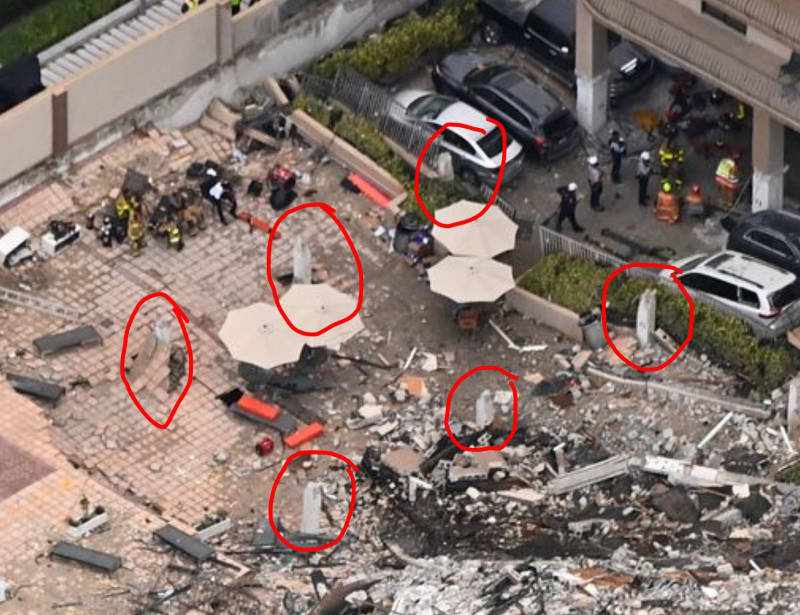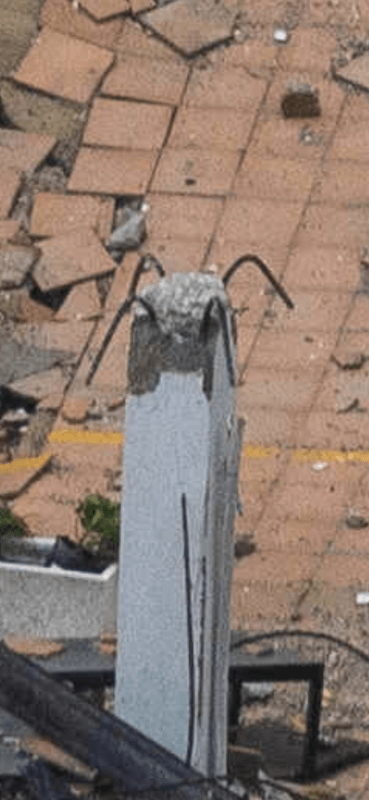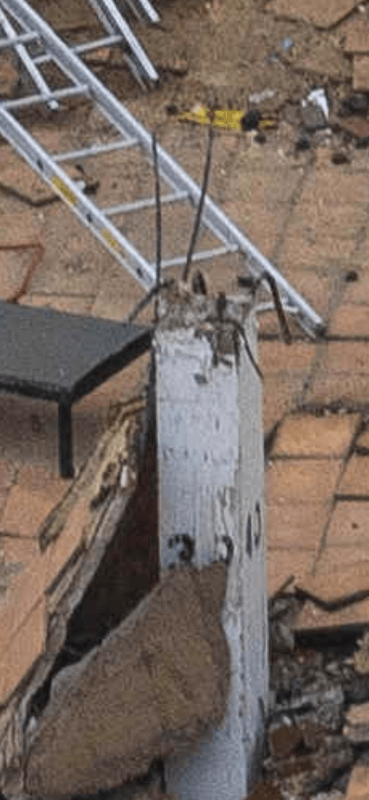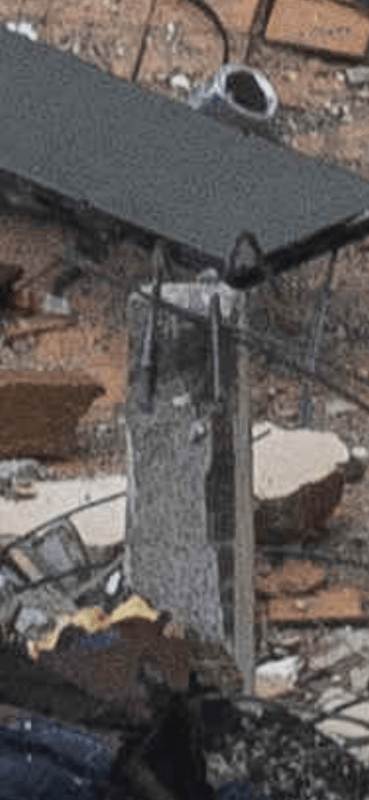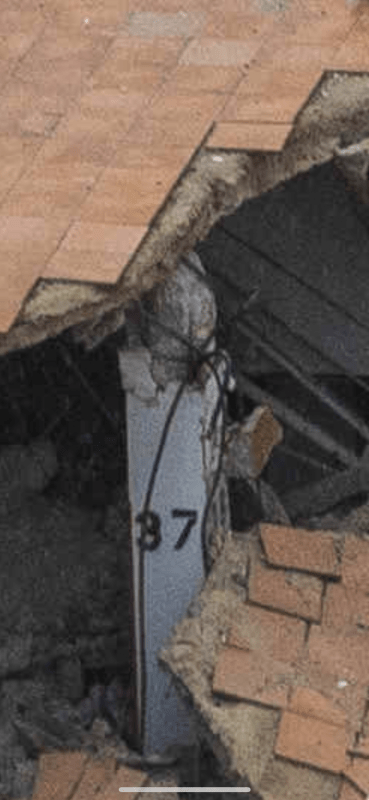I have been thinking about this collapse for a bit now; I think there are several items that we (the construction community and the building structural engineering community) have to look at and potentially address. My observation is that these items can be broken down into four areas: 1) the initiating event for the collapse, 2) the progressive/disproportionate collapse, 3) design review/construction inspection, and 4) Post-CO inspection.
[ol 1]
[li]Initiating Event:
To my mind, the initiating event for this is really only of primary interest if it wasn't extraordinary. Once the reports are written and that initial domino is determined, it may well be appropriate to modify the design codes to account for some type of additional "loading" or some type of additional member resiliency.[/li]
[li]Progressive/disproportionate collapse:
The progressive/disproportionate collapse is the scariest part of this unfortunate event. As a community, we have come a long way in addressing progressive collapse, but it has been accrued through tragic events like this collapse (Ronan Point, Oklahoma City, WTC). Most in the SE community would use the prescriptive requirements for continuity spattered throughout the various design codes for buildings like this. The more direct and robust design solutions are time-consuming and computationally intensive, not to mention they require substantial knowledge of the reinforcing and connections in the members.
I was gobsmacked by the reinforcing of the columns where the parking slab punched. As best as I can tell, there was a minimal amount of top reinforcing over the columns and any bottom reinforcing over the columns was not sufficiently developed or lapped to form the catenary action that would enable the structure to "span over" localized column failures. I have not taken the time to scrutinize the construction documents, but I expect this bottom reinforcing condition would be typical for the building. I would be interested to see how a building with the same concrete strength and the same reinforcing ratios as the condo tower, but with the reinforcing detailing we currently use, would perform for a loss of column scenario. To return to the first point, if the initiating event was a vehicle striking a column in the garage area, perhaps we should explicitly design the structure above for a loss of column scenario or mandating the columns in these areas be robustly reinforced to handle a vehicle strike.
Overall I think the UFC design approach for progressive collapse is a good approach, but I would like to see it developed into more of a standalone document that doesn't rely on ASCE 41 as much. Eventually, I would like to see ASCE produce a standard for progressive collapse that offers the use of the 4 analysis procedures listed in the UFC and mandates under what conditions the more rigorous procedures are used.[/li]
[li]Design Review/Construction Inspection:
Design Review in a lot of jurisdictions is depressing. I have dealt with major jurisdictions where code reviewers have requested information that is patently obvious on my design documents. To the point, my colleagues and I have questioned the ability of the reviewer to truly digest any important structural information. In many places, design review is merely a proforma check of loading parameters mandated by the Code. I know there are many jurisdictions that mandate some form of peer review, and by and large, I think that is a good thing, although these reviews can sometimes devolve into petty and esoteric comments. We need real review that validates the structure loading and identifies complete and robust load paths, both gravity and lateral. This also means we need building officials with a structural knowledge base and meaningful experience in design.
In my first few years of practice, I attended a SEA meeting that looked at the renovation of the Georgia Dome. One thing from that case study that stuck with me was that the main tension ring in the structure was built with half the shear stirrups called for in the construction documents. This was a major marquee, public project, and the inspection scheme missed critical reinforcing on a primary design element. The more experience I have gained, the more troubling I found this incident. I think special inspections as implemented by the IBC have gone a long way toward making the actual structure reflect the design documents. That being said, it wasn't until the mid-2000's that a lot of jurisdictions got on board with the special inspection process. I have had limited experience with the Florida Threshold inspection process, and to be quite frank, I still cannot tell you specific items required by threshold inspections. A few years ago, I attempted to compare the Threshold Inspections with the standard IBC inspections, but I hit a brick wall and didn't find real answers. All this being said above, there is still a real disconnect between structures constructed before the implementation of a rigorous inspection process and those constructed after. I also think that all buildings constructed should have a repository of all the final construction documents and submittals, along with documents related to post-construction renovation/modification.[/li]
[li]Post-CO Inspections:
While a properly designed, constructed, and inspected structure is a good way to ensure a resilient structure with a reasonable lifespan, maintenance has a significant impact on structural performance over the long run. I know many of you in the SE community have run across your share of structures that did not have the upkeep to keep them performing as intended, just like this structure appears to have suffered from. I was not aware of Miami/Dade's post-CO inspection requirements. I think that is a good start, but I agree with some other posters that 40 years is likely too long a period to wait, given that most designs are geared toward a 50-year lifespan. I also like some other's comments that there should be some type of tiered inspection. I jumped into thinking about the ASCE 41 tiered evaluation. Perhaps we should be using an increasing level of scrutiny on a 20, 30, 40-year schedule. I think this is also important for more substantial structures that were likely designed and constructed in accordance with the state of practice at the time of construction but do not include considerations for phenomena (like progressive collapse) that have become increasingly important. For some structures, it seems unreasonable to wait for some potential future event (like a significant renovation) to trigger a review of the design and constructed condition[/li]
[/ol]
This was a little longer than I intended, and it may have rambled on, but I think it needs to be considered by the community, and it looks to the future for issues we can already identify and begin addressing.
Robert Hale, PE, SE

